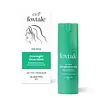What's inside
What's inside
 Key Ingredients
Key Ingredients

 Benefits
Benefits

 Concerns
Concerns

 Ingredients Side-by-side
Ingredients Side-by-side

Water
Skin ConditioningPropylene Glycol
HumectantHydroxyethyl Acrylate/Sodium Acryloyldimethyl Taurate Copolymer
Emulsion StabilisingGlycolic Acid
BufferingGlycerin
HumectantLactic Acid
BufferingGluconolactone
Skin ConditioningOctyldodecanol
EmollientOctyldodecyl Xyloside
EmulsifyingPEG-30 Dipolyhydroxystearate
EmulsifyingMandelic Acid
AntimicrobialPolyacrylate-13
Polyisobutene
Polysorbate 20
EmulsifyingTocopherol
AntioxidantPanthenol
Skin ConditioningPhenoxyethanol
PreservativeSodium Phytate
Ethylhexylglycerin
Skin ConditioningSodium Hydroxide
BufferingParfum
MaskingWater, Propylene Glycol, Hydroxyethyl Acrylate/Sodium Acryloyldimethyl Taurate Copolymer, Glycolic Acid, Glycerin, Lactic Acid, Gluconolactone, Octyldodecanol, Octyldodecyl Xyloside, PEG-30 Dipolyhydroxystearate, Mandelic Acid, Polyacrylate-13, Polyisobutene, Polysorbate 20, Tocopherol, Panthenol, Phenoxyethanol, Sodium Phytate, Ethylhexylglycerin, Sodium Hydroxide, Parfum
Water
Skin ConditioningGlycerin
HumectantKaolin
AbrasiveBentonite
AbsorbentDipropylene Glycol
Humectant1,2-Hexanediol
Skin ConditioningPalmitic Acid
EmollientCeramide Ns
Skin ConditioningStearic Acid
CleansingPolyacrylamide
Caprylyl Glycol
EmollientPolymethylsilsesquioxane
C13-14 Isoparaffin
EmollientParfum
MaskingEthylhexylglycerin
Skin ConditioningSilica
AbrasiveDisodium EDTA
Laureth-7
EmulsifyingButylene Glycol
HumectantPearl Extract
AntioxidantPrunus Serrulata Flower Extract
Skin ConditioningEthyl Hexanediol
SolventCitrus Paradisi Fruit Extract
Skin ConditioningTocopherol
AntioxidantCI 77891
Cosmetic ColorantCI 77491
Cosmetic ColorantWater, Glycerin, Kaolin, Bentonite, Dipropylene Glycol, 1,2-Hexanediol, Palmitic Acid, Ceramide Ns, Stearic Acid, Polyacrylamide, Caprylyl Glycol, Polymethylsilsesquioxane, C13-14 Isoparaffin, Parfum, Ethylhexylglycerin, Silica, Disodium EDTA, Laureth-7, Butylene Glycol, Pearl Extract, Prunus Serrulata Flower Extract, Ethyl Hexanediol, Citrus Paradisi Fruit Extract, Tocopherol, CI 77891, CI 77491
Ingredients Explained
These ingredients are found in both products.
Ingredients higher up in an ingredient list are typically present in a larger amount.
Ethylhexylglycerin (we can't pronounce this either) is commonly used as a preservative and skin softener. It is derived from glyceryl.
You might see Ethylhexylglycerin often paired with other preservatives such as phenoxyethanol. Ethylhexylglycerin has been found to increase the effectiveness of these other preservatives.
Glycerin is already naturally found in your skin. It helps moisturize and protect your skin.
A study from 2016 found glycerin to be more effective as a humectant than AHAs and hyaluronic acid.
As a humectant, it helps the skin stay hydrated by pulling moisture to your skin. The low molecular weight of glycerin allows it to pull moisture into the deeper layers of your skin.
Hydrated skin improves your skin barrier; Your skin barrier helps protect against irritants and bacteria.
Glycerin has also been found to have antimicrobial and antiviral properties. Due to these properties, glycerin is often used in wound and burn treatments.
In cosmetics, glycerin is usually derived from plants such as soybean or palm. However, it can also be sourced from animals, such as tallow or animal fat.
This ingredient is organic, colorless, odorless, and non-toxic.
Glycerin is the name for this ingredient in American English. British English uses Glycerol/Glycerine.
Learn more about GlycerinParfum is a catch-all term for an ingredient or more that is used to give a scent to products.
Also called "fragrance", this ingredient can be a blend of hundreds of chemicals or plant oils. This means every product with "fragrance" or "parfum" in the ingredients list is a different mixture.
For instance, Habanolide is a proprietary trade name for a specific aroma chemical. When used as a fragrance ingredient in cosmetics, most aroma chemicals fall under the broad labeling category of “FRAGRANCE” or “PARFUM” according to EU and US regulations.
The term 'parfum' or 'fragrance' is not regulated in many countries. In many cases, it is up to the brand to define this term.
For instance, many brands choose to label themselves as "fragrance-free" because they are not using synthetic fragrances. However, their products may still contain ingredients such as essential oils that are considered a fragrance by INCI standards.
One example is Calendula flower extract. Calendula is an essential oil that still imparts a scent or 'fragrance'.
Depending on the blend, the ingredients in the mixture can cause allergies and sensitivities on the skin. Some ingredients that are known EU allergens include linalool and citronellol.
Parfum can also be used to mask or cover an unpleasant scent.
The bottom line is: not all fragrances/parfum/ingredients are created equally. If you are worried about fragrances, we recommend taking a closer look at an ingredient. And of course, we always recommend speaking with a professional.
Learn more about ParfumTocopherol (also known as Vitamin E) is a common antioxidant used to help protect the skin from free-radicals and strengthen the skin barrier. It's also fat soluble - this means our skin is great at absorbing it.
Vitamin E also helps keep your natural skin lipids healthy. Your lipid skin barrier naturally consists of lipids, ceramides, and fatty acids. Vitamin E offers extra protection for your skin’s lipid barrier, keeping your skin healthy and nourished.
Another benefit is a bit of UV protection. Vitamin E helps reduce the damage caused by UVB rays. (It should not replace your sunscreen). Combining it with Vitamin C can decrease sunburned cells and hyperpigmentation after UV exposure.
You might have noticed Vitamin E + C often paired together. This is because it is great at stabilizing Vitamin C. Using the two together helps increase the effectiveness of both ingredients.
There are often claims that Vitamin E can reduce/prevent scarring, but these claims haven't been confirmed by scientific research.
Learn more about TocopherolWater. It's the most common cosmetic ingredient of all. You'll usually see it at the top of ingredient lists, meaning that it makes up the largest part of the product.
So why is it so popular? Water most often acts as a solvent - this means that it helps dissolve other ingredients into the formulation.
You'll also recognize water as that liquid we all need to stay alive. If you see this, drink a glass of water. Stay hydrated!
Learn more about Water